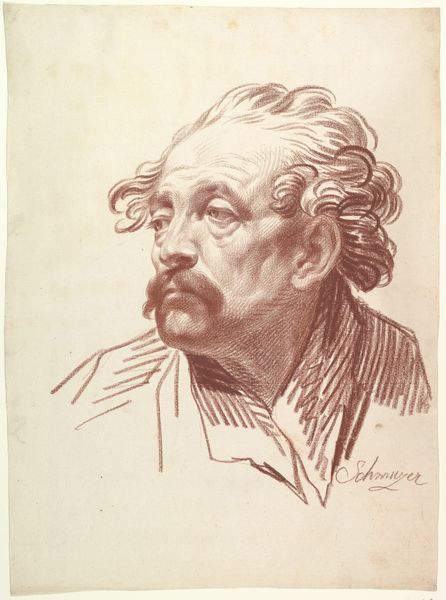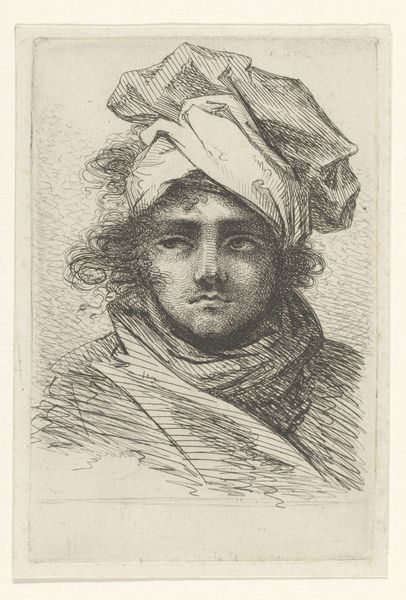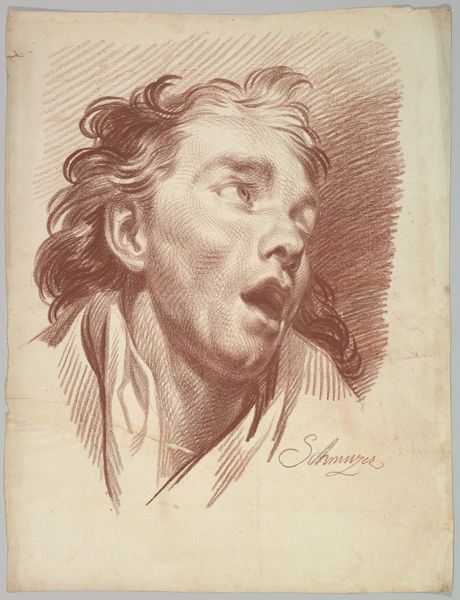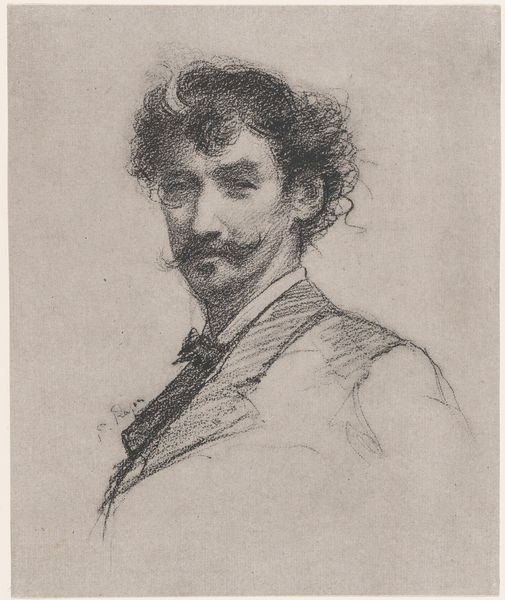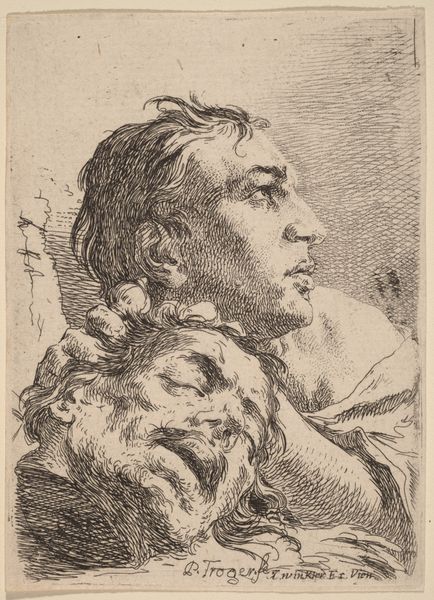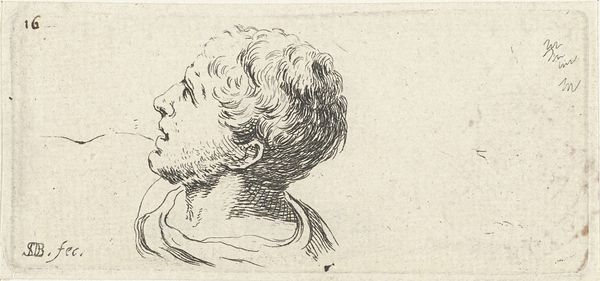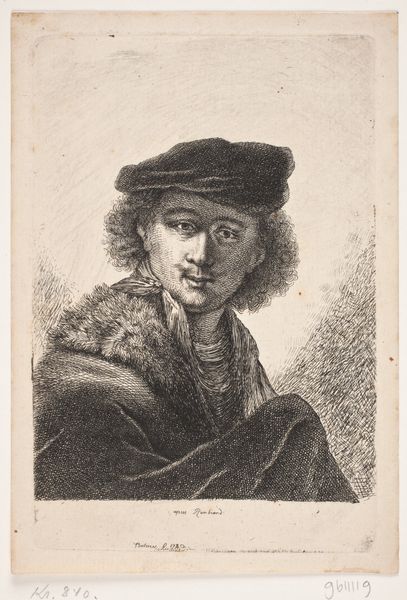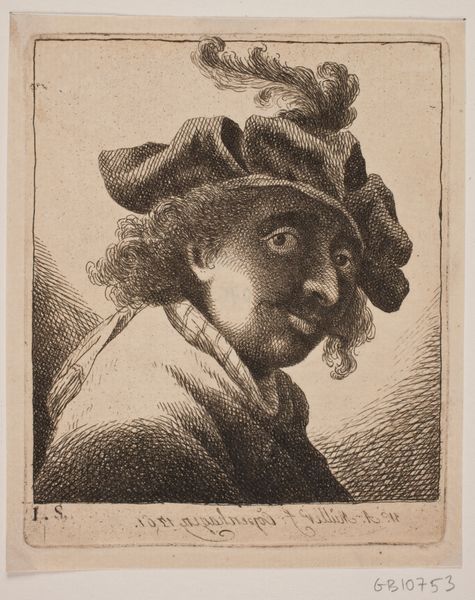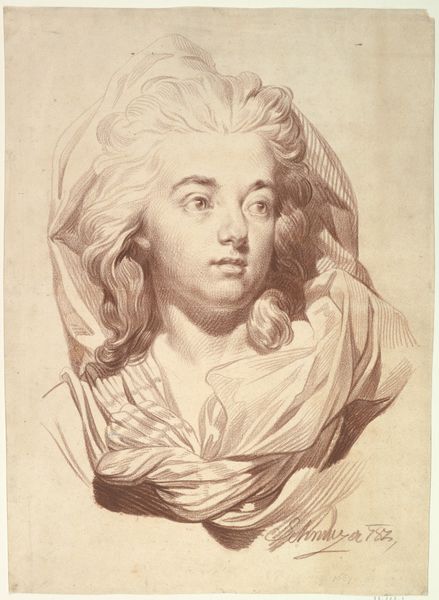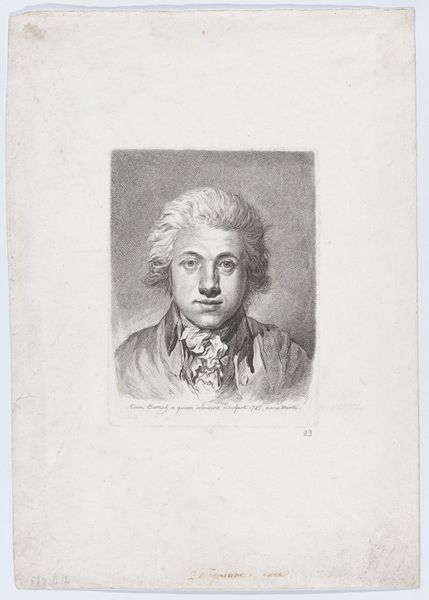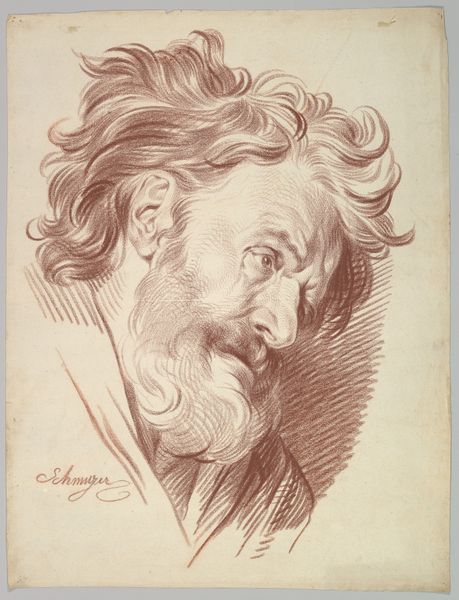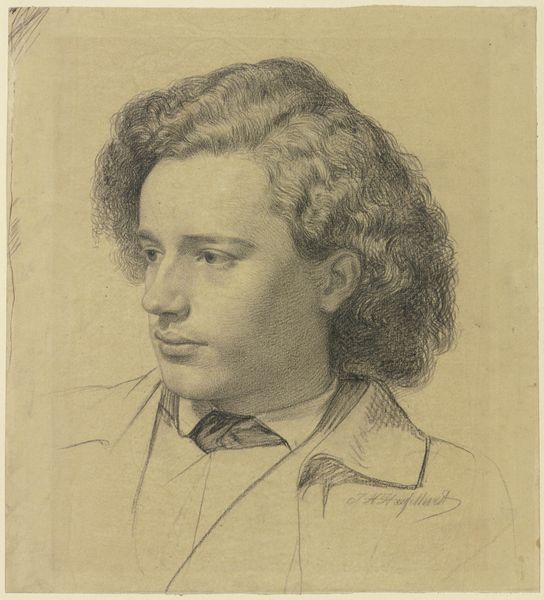
Dimensions: sheet: 23 7/16 x 18 in. (59.5 x 45.7 cm)
Copyright: Public Domain
Curator: Immediately, I feel like I've walked into a salon. The romantic kind, filled with poetry recitations and furtive glances. Editor: This drawing, "Head of a Young Man Looking Right," was completed in 1774 by Jakob Matthias Schmutzer. Schmutzer, a prominent figure, made this using print and drawing techniques. Look at how he combines those two approaches. Curator: Print and drawing? Oh, yes, it's like a moment captured, but also meticulously etched in time. The lines aren’t just lines, are they? It feels as though he’s been unearthed—found rather than made. The gaze, especially, it's the most gentle longing. What sort of paper did they use back then for such works? Editor: Most likely a laid paper, the kind with visible lines from the papermaking process. You can almost feel the texture, I suppose. Given the way the drawing is printed, it gives this work some reproducible features, it is, essentially, made for sharing through copies of the art, allowing greater audiences to see Schmutzer's work beyond an original drawing's exclusive domain. Curator: Aha, that almost seems… revolutionary for the time? To make art not just for the elite, but for distribution? It gives the artwork a double meaning - and even makes that quiet, gentle longing seem more universal and accessible. The medium shapes the message. Editor: Precisely. The red chalk gives it a certain warmth, doesn't it? That speaks to materiality. It's interesting how choosing such a material lends itself to portray this romantic vision you're suggesting - it creates an almost accessible aesthetic for that "elite". This suggests class dynamics at play, wouldn't you say? Curator: Certainly a deliberate artistic choice, then, and a clever one, because now I’m pondering about everything this lad dreamt about as a subject to this romantic artwork. Red chalk turns out to be more subversive than one might have given it credit for. Editor: So, while seemingly a portrait, we start thinking about distribution, about technique, about its place in material history... suddenly a simple drawing invites complex layers of reading. Curator: It just reminds us that art can sometimes be a portal—a quick sketch might also be a looking glass into the dreams and circumstances that conceived it.
Comments
No comments
Be the first to comment and join the conversation on the ultimate creative platform.
